I write about interior design trends every day, or at least I hear about them. Every week new trends emerge, some fade away in a few days, others take hold and become staples. Traditionally, we value trends and, of course, we want to follow them to bring our homes up to date. But if there’s anything the trends of 2024 have taught us so far, it’s that not following trends is always in trend.
This year was dominated by anti-trend styles and transitional spaces, and although there was the odd micro-trend, all the “core” trends and various short-lived grandparent aesthetics were largely absent compared to 2023.
So, which interior design trends should you follow in 2024? And more importantly, how can you do so without ending up with a home that feels outdated in a few months? We spoke to the interior designers behind many of these trends to get their take.
Should you follow interior design trends?
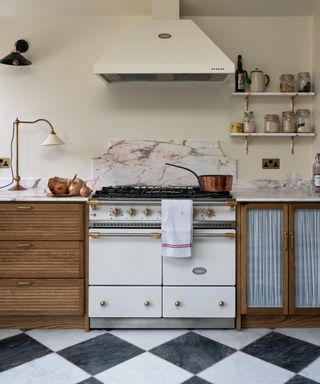
(Image courtesy of deVOL)
This question requires a preface. Many interior designers I’ve spoken to about following interior design trends have initially answered, “No.” But that’s not all. Even temporary design trends have their place. The key is to only adopt what you love and incorporate it into your home.
Designer Catherine Ebert explains it perfectly: “Like most things, trends should be used in moderation and only if they feel right to you. Successful interiors are interesting combinations of furniture. When a new trend emerges, find a way to combine it with other furniture pieces so that it becomes part of the whole.”
“For example, organic shapes are becoming more popular right now, and I love them, but if you already have geometric furniture, you don’t have to throw it all out. Adding an organic lamp or a curved chair can make the mix more interesting than just one or the other. In my living room, I have a Noguchi freeform sofa and a classic square-arm sofa in similar tones, and it’s the tension between their shapes that really makes the room interesting.”
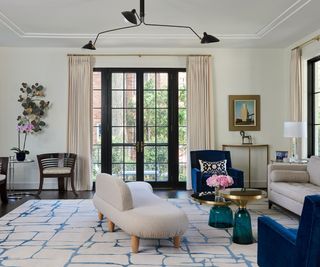
(Image courtesy of Alice Hoaklander)
Designer Katie Curtis takes a similar approach. She explains: “I never follow design trends, choosing instead to create spaces that reflect an eclectic style and a truly unique aesthetic. By focusing on a collected and curated look, I aim to create environments that feel timeless and personal. Every item I select, from furniture to accessories, is carefully chosen to contribute to an overall sense of character and history, always with consideration for the home’s architecture and style. This approach eschews the fleeting nature of trends and embraces design philosophies that stand the test of time, creating a home that feels lived in and loved.”
“While I try not to be swayed by passing fads, it’s impossible not to be influenced by the incredibly diverse ideas I encounter at the many design and art shows I attend. These events expose me to a wide range of furniture, materials and finishes that continue to enrich my creativity. But rather than simply adopting these trends, I strive to interpret and integrate them in a way that matches my vision of timeless, curated spaces. This allows me to infuse my designs with fresh, contemporary elements while maintaining a consistent, enduring aesthetic,” she adds.
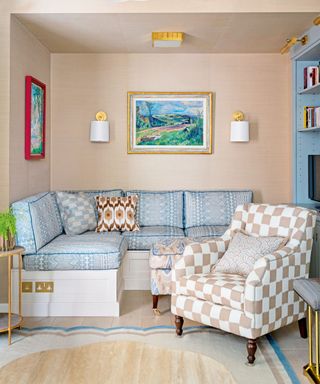
(Image courtesy of James Merrell)
Of course, there’s an obvious downside to following interior design trends: you’ll end up with a home that quickly feels outdated and you’ll have to constantly change your interior design style. The key to avoiding this is to choose a transitional style (ironically, this is a big trend for 2024). Mix and match different styles, eras, and trends to create a home that will never go out of style because you’re not relying solely on one style that may go out of style.
“Chasing the latest interior design trends is tempting, but often the wrong approach. Trends come and go, but classic design elements survive timeless,” explains designer Jennifer Davis. “Most contemporary trends are influenced by timeless styles like midcentury modern, Scandinavian minimalism, and European influences.”
“Your home should reflect your personality and your family story, not just what’s currently in fashion. Prioritizing what resonates with you will help your space feel authentic and meaningful. This will not only increase your enjoyment of your home, but it will prevent it from feeling outdated too quickly.”
“Constantly updating to keep up with trends is costly and unsustainable. Instead, invest in traditional pieces that are well-made and timeless, rather than disposable items. This approach is more environmentally friendly and creates a timeless, beautiful home,” adds Jennifer.
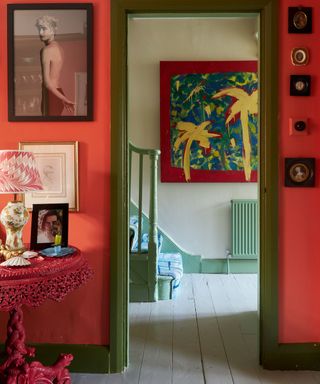
(Image courtesy of Farrow & Ball)
So how can you keep up with the trends of 2024? The first rule we have already learned is to only follow trends you love and that fit with the aesthetic you already have in place at home. Don’t redecorate an entire room just to match the trend of the month.
But of course, there are trends that we still love even if we know they won’t last. As much as I love wavy pieces right now, I know this style probably won’t last until 2025, but I still wanted to add some small items to my home that can be easily swapped out, like lamp shades, mirrors, and cushions.
Designer Bethany Adams suggests the same: “If following trends makes you feel good, then by all means, do it, but keep it small and inexpensive so that in two years’ time your home isn’t screaming ‘Summer 2024!’ A cushion here or a decorative vase there won’t cost you a fortune, and if you haven’t fully established your style yet, it’s a totally fine way to experiment to figure out exactly what it is.”
“But avoid splashing out on trendy items or architectural changes to your home unless you’ve consulted a professional and thought carefully about how you’ll feel about these investments once the public goes crazy for the new stuff. Today’s trend is often tomorrow’s tacky,” she adds.
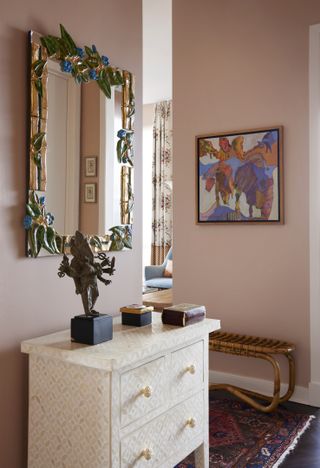
(Image courtesy of Thomas Loof)
The best advice when it comes to following interior design trends is to not rush into anything, especially if you’re thinking about making major or expensive changes to your home.
Jennifer Walter suggests, “Decorating your home according to trends is always an uncertain process. If you’re unsure, wait. If a trend lasts for even a few years, it will probably trickle down to bigger box stores at more affordable prices. Trendy items will be easier to try without spending thousands of dollars. If you’re still on the fence, stick to smaller items like pillows, candlesticks, and accessories. Resist the urge to tile the floors or paint the kitchen cabinets if you feel you might regret it. But if you do hire an interior designer, trust their instincts and their ability to understand your comfort zone.”


